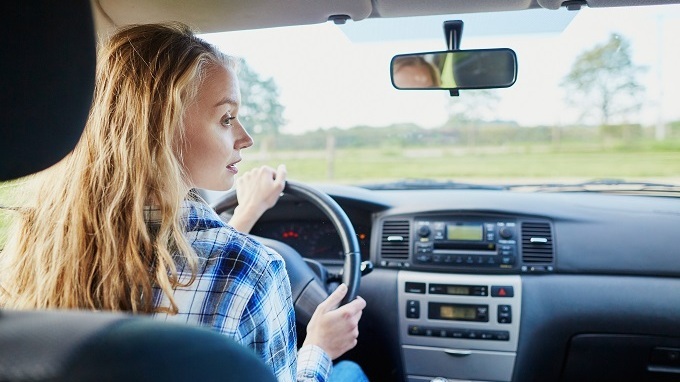Research In Action
Research In Action
Breadcrumb

To promote driver safety and safe mobility among teens and young adults with neurodevelopmental differences, Dr. Allison Curry and her team at the Center for Injury Research and Prevention at Children’s Hospital of Philadelphia (CHOP) developed the Autism Evaluating Transportation Among Adolescents (ETA) Naturalistic Driving Study (NDS). In collaboration with the Virginia Tech Transportation Institute, this study aims to categorize the driving behaviors of autistic teens and young adults to inform development of driving resources and other resources to help this group stay mobile. I joined Dr. Curry’s team as a Clinical Research Assistant in Fall 2022 and began working on the NDS shortly after.
In the NDS, participants spend a day at CHOP with our team as we install custom data collection equipment into their cars. While our technician is working on the installation, we bring the family inside for a few assessments and questionnaires. Then they spend the rest of the day relaxing at the Roberts Center for Pediatric Research or exploring Philadelphia until the equipment is installed.
At the end of the day, we send them off to drive as they normally would for one year. Throughout the year, we collect GPS, speed, acceleration, video, audio, and other driving data. After a year has passed, participants return to the Roberts Center for an afternoon so that we can remove the equipment and thank them for taking part in the study.
Family Feedback
One of the highlights of my time at CHOP has been meeting the families that participate in our studies and learning about their experiences in research. At one of our recent visits, I was able to have a longer conversation with one of our parent and teen participant pairs, Amy and Caleb,* about their time in the NDS.
Being familiar with CHOP and comfortable as study participants, Amy and Caleb were excited about the opportunity to contribute to the field of autism research. They shared that they decided to take part in the study because they wanted to help others and truly understand the benefits of driving for independence.
Previous research found that one third of autistic adolescents who are age-eligible to begin the learning to drive process go on to pursue a driver’s permit. Most of those who pursue a driver’s permit (90%) do receive a driver’s license, showing that many decisions about driving are made prior to the learning to drive process.
With this in mind, we discussed in depth the benefits and importance of learning to drive. “I think that most parents’ goal is: how can I help [my children] be better than me.? And how can I help them get to a place where they’re independent and capable?...And especially for this study with driving, I told my kids it’s a life skill. You have to drive for your independence, for your well-being, for your livelihood,” Amy told me. “Unless you live in New York,” Caleb added.
The Learning to Drive Experience
We also spoke about Caleb’s learning-to-drive experience. In addition to gaining comfort and confidence in the car over time, he developed an enthusiasm for driving. When talking about his initial decision to delay pursuing his learner’s permit, Caleb shared, “Part of that was also just a lack of interest from me to begin with, which is funny because now I mean if you actually are keeping track of GPS data, I’m actually going out of my way just so I can drive.” He also likes watching YouTube tutorials on how to operate the car’s manual mode and enjoys shifting through gears while driving on the many hills in his town. For Caleb, learning to drive brought both independence and a newfound hobby.
Recently, our team launched another NDS for teens with attention deficit/hyperactivity disorder (ADHD) and their peers without ADHD, and I am excited to be a part of this study from the beginning.
If you and your family are thinking about participating in research, particularly a naturalistic driving study, consider Caleb’s advice: “I’d say just do it. It’s definitely worth it.”
*Participant names have been changed to respect their privacy.




